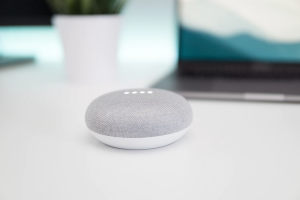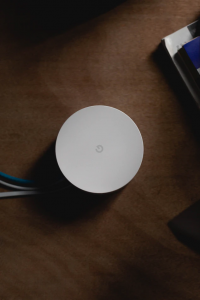Building a Smart Home – Where Do You Begin?
Even though it didn’t get too popular and mainstream up until a few years ago, the concept of a smart home has been around for a good while. Initially, the goal was to save on electricity bills and if possible, make your day-to-day life a bit more convenient. Today, with the smart home integrating with home security systems and automation devices in various ways, it’s something a lot of people want a piece of.
The thing is, if you’re one of those people, you have quite a lot of options out there. Some are good, some aren’t, prices vary wildly, and compatibility isn’t guaranteed. If you’re good with tech and research, you should be able to find your way around things, but if not, you might end up buying the wrong things. Depending on your budget, that might be a costly mistake.
To make sure that doesn’t happen, below we’ll discuss a few things about the smart home. We’ll talk about where you want to begin with building yours, and how you should choose your devices. Without wasting too much time, let’s go.
Choosing an Ecosystem
Similarly to how things would look if you were choosing your new smartphone or computer, with a smart home you’ll need to decide on an ecosystem. Not all devices are compatible with each other, and since the goal of a smart home is to have everything work with everything else, compatibility is crucial. While things are expected to change rather soon, and we’ll get a universal way of connecting everything, at the moment there are a couple of options.

One way to go about things is to go for Zigbee or Z-Wave. Both are communication protocols, and if you make sure all your devices support the same protocol, the devices will be able to communicate with each other. You still might need multiple apps for multiple manufacturers, however, so this is something to keep in mind.
The other option is to go for a smart assistant hub and make sure all the devices you buy are completely compatible with that hub. This way, you’ll be able to use your voice to control all such devices when you’re at home, and you can use your smartphone when you’re outside.
If you want the easiest-to-use ecosystem, you should go for Apple’s HomeKit. On the other hand, if you want the best compatibility with the highest number of devices, Amazon’s Alexa is the way to go. Google Home is somewhere in between, so choose what works best for you.
What Devices Should You Get First?
This is the second difficult question you’ll need to answer, is what devices do you start with when you’re equipping your smart home. Whichever ecosystem you go for, you should first get the hub. It might be just that, a hub, or it might be a Bluetooth speaker with the assistant of choice. But since that’s going to be your main control point for all devices, choose carefully.
Next, you either go for convenience devices or security. While some only invest in the smart home concept for convenience, security is a big part of the industry, so we would actually suggest that you go for security-based devices first. Get a smart lock and a video doorbell. It’s a combination that will not only limit who can enter your home, but also one that will give you an overview of your front door – who came, at what time, whether it’s locked or not, and will let you remotely lock or unlock it. Following that, get a few smart cameras, too. Those will usually come with motion detectors, and they’ll be able to make use of your smart home system to send you notifications to your phone when something happens.
After that, you could get a few devices that make your living more convenient. Get smart plugs that you can control remotely, or add a smart thermostat: Best Wi-fi and Programmable Thermostats or a smart carbon monoxide detector: Best Carbon Monoxide Detector – our top pick even has Alexa built-in!

Connect Everything
Once you’ve decided on an ecosystem and bought the devices you need, it’s time to connect everything. Note that most devices will require a 2.4GHz network, which is still more common than a 5GHz one, but it’s something to consider. Since your router and network are a gateway to your entire smart home, make sure things are as secure as possible – unique usernames and passwords, no access for unknown devices, separate guest network, and two-factor authentication where possible. Once you’ve done this and connected everything, it’s time to enjoy your smart home!